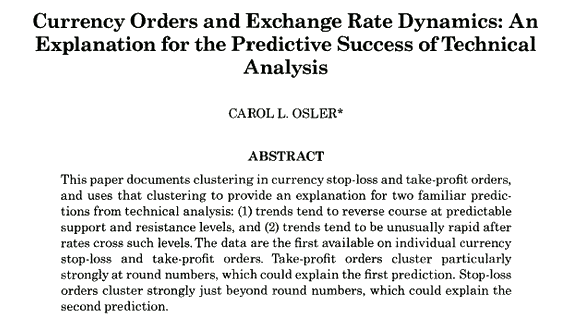Chart Patterns
Chart patterns may occur in various time frames. You may find a head and shoulders pattern formed over several hours during a day, or over several months.
Patterns are formed by support and resistance levels and by trendlines. We concentrate on the patterns formed by support and resistance levels as these tend to have a sounder conceptual base.
A criticism of patterns is that they are also evident in random data, charts generated using random numbers. If the patterns appear in data where there is no trend then what is their significance?
- Go back to the largest possible time frame: the Dow Industrial Average commenced in May 1896 at a level of 40, today the index stands at more than 10,000 - a steady up-trend for more than a century. The data is definitely not random.
- You may observe head and shoulders and similar patterns in random data, but you will not observe support and resistance levels. Studies of foreign exchange markets have shown that limit orders are not scattered randomly in the market, but are clustered around support and resistance at round numbers.

- Empirical tests carried out on various point and figure chart formations, by Professor Earl Davis of Purdue University were profitable between 70 and 90 per cent of the time in bull markets and between 80 and 90 per cent in bear markets. Average gains (on profitable trades) were 2 to 3 times as large as average losses (on unprofitable trades). Thomas Dorsey describes the results of the 1965 study in Point & Figure Charting, including which formations had the highest success rates.
Chart patterns appear on all the various Chart Types:
- Point & Figure charts are especially useful in identifying price patterns; and
- Equivolume is ideal for identifying Volume Patterns;
- The same patterns are also be found on Momentum, Detrended Price Oscillator and MACD indicators and can be traded in a similar fashion.
